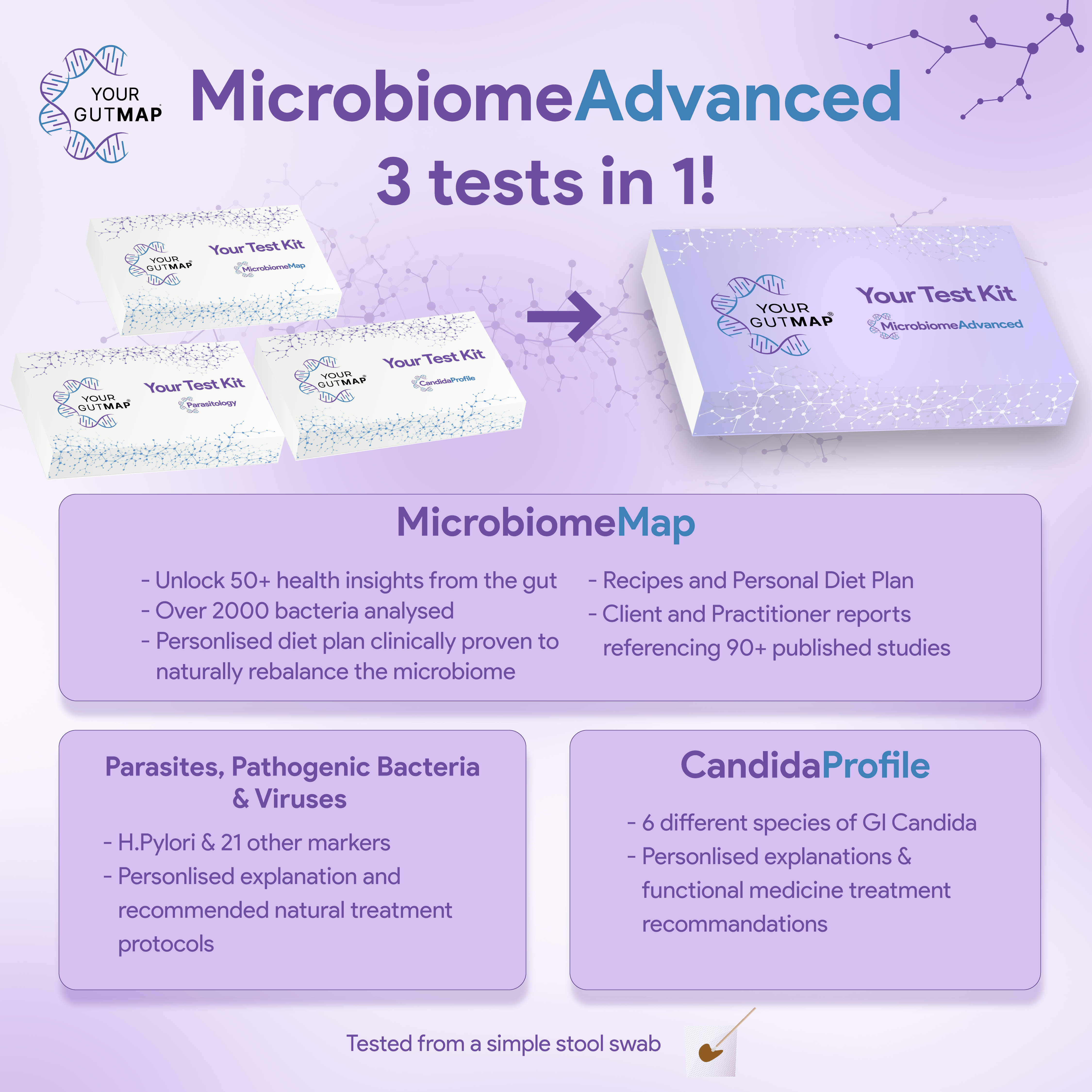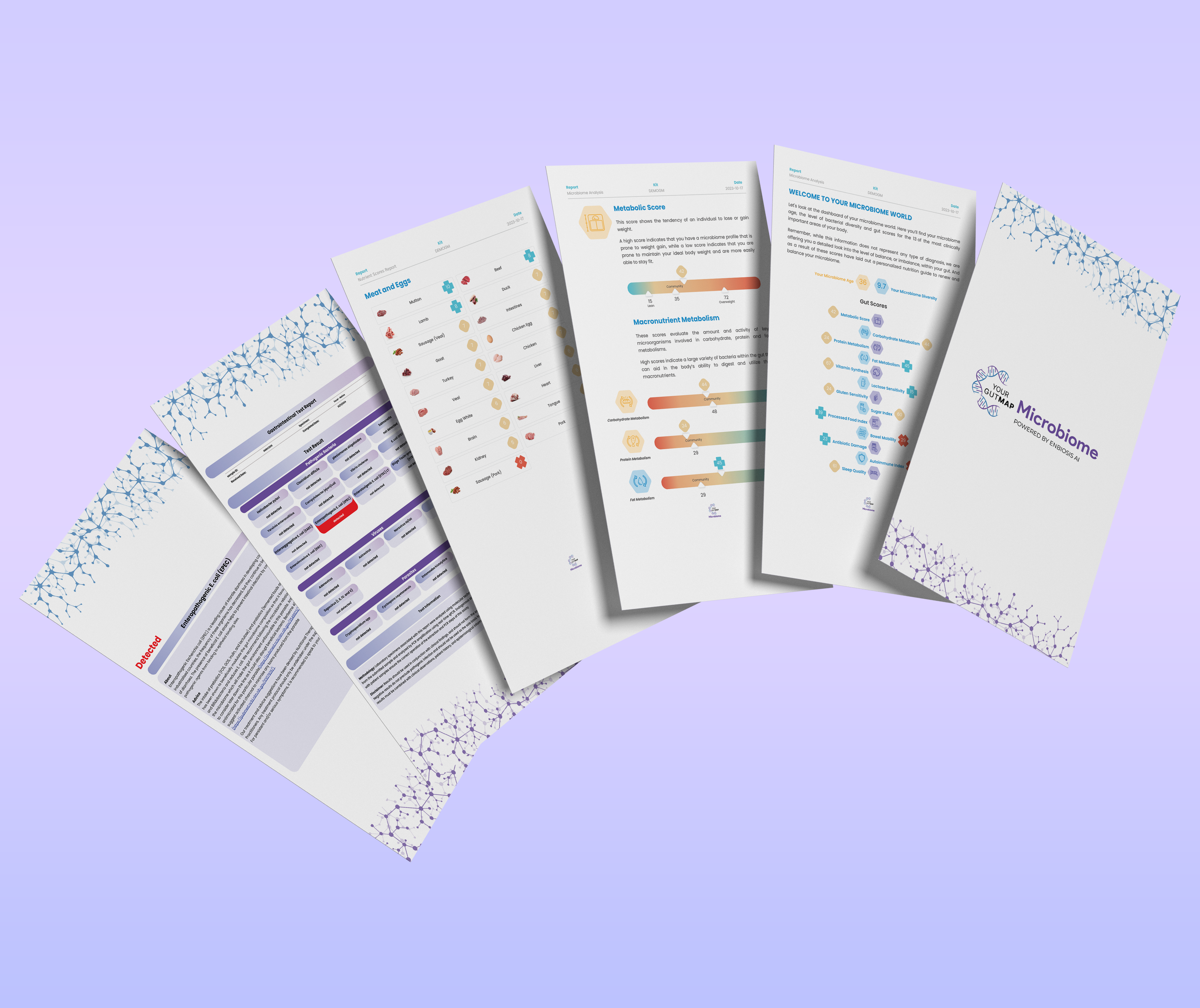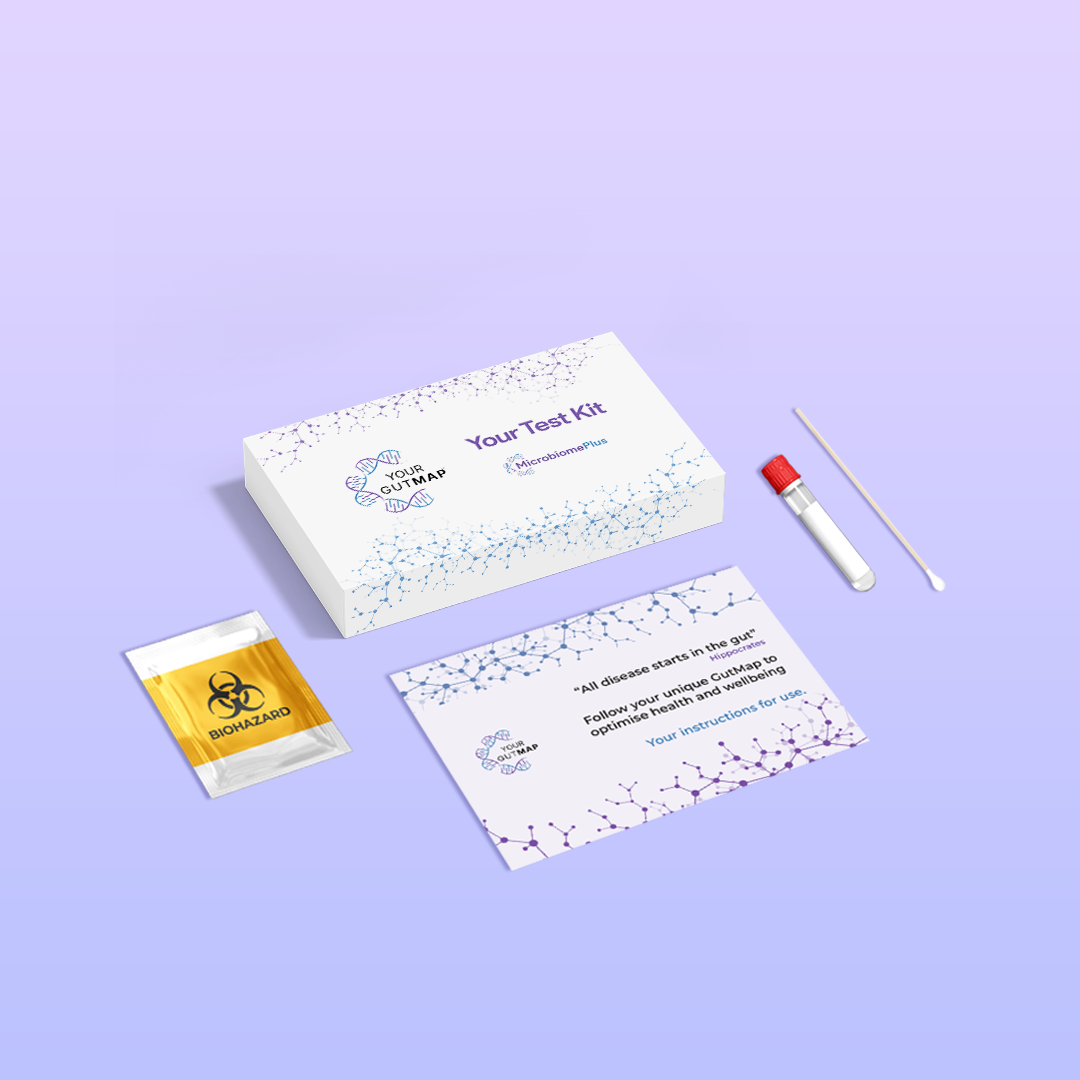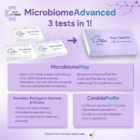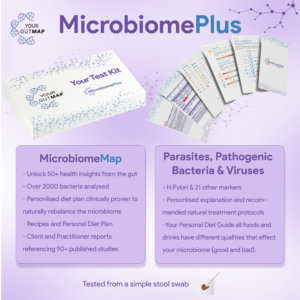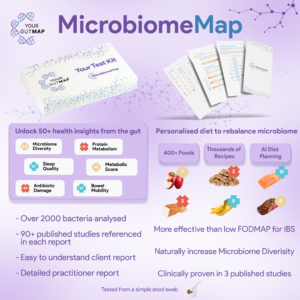Description
Gut Microbiome Advanced
3 tests in 1
Gut Microbiome, Parasitology Testing and Candida Testing.
Your personal diet guide will help coach you through naturally
rebalancing your gut microbiome. Following this protocol can aid
symptomatic improvements within 6 weeks. Published papers using
our gut microbiome test saw the below improvements:
On average patients lost 7.2KG of weight loss
63% increase in energy levels
42% improvement in sleep disorders
18% improvement in overall microbiome diversity
What does the testing involve?
1. Simple at home stool sample swab
2. Complete a simple 3 minute health quiz
3. Pre paid return postage to the Lab
4. Lab genetic analysis (3 weeks)
5. 30+ page health report & personal diet guide
What do I get?
1. Gut Health
2. Gut Age and Diversity
3. Bacteria Balance
4. Health Scores
5. Prevalence to Health Conditions
6. AI Reporting Tool – offering customised food plans in
aid of gut health, including over 300 foods
CandidaProfile
Unlike other Candida tests, YourGutMap analyses 6 different
Candida species, and provides specific treatment advice for
each species.
Candida albicans
Candida glabrata
Candida tropicalis
Candida parapsilosis
Candida auris
Candida krusei
Gastrointestinal (GI) Candida overgrowth, often referred to as
candidiasis, occurs when a yeast-like fungus grows excessively
in the digestive tract. This can happen when the balance of
bacteria and yeast in the gut is disrupted, often due to factors
like antibiotic use, poor diet, high sugar intake, stress, or a
weakened immune system. Studies show candida overgrowth is
more likely when there is a gut microbiome imbalance /
dysbiosis.
Symptoms of GI Candida overgrowth can include:
– Bloating and gas: Excess yeast can produce gases, leading
to bloating and discomfort.
– Diarrhoea or constipation: Changes in gut flora can lead to
irregular bowel movements
– Abdominal pain or cramps: Irritation from the overgrowth
can cause stomach pain and cramping.
– Nausea: Overgrowth may lead to nausea, especially after
eating.
– Cravings for Sugar and Carbohydrates
– Fatigue and Brain Fog
Parasites, pathogenic bacteria & viruses:
Your Microbiome your digestive system is home to trillions of
bacteria that make up your Microbiome.
However unwanted bacteria and parasites can find their way
into their gut. Whilst some parasites are harmless, others can
cause health problems.
One of the most researched and prominent pathogenic bacteria
is Helicobacter pylori (H. pylori) which has been shown to
damage tissue in the small intestine.
The YourGutMap Parasitology test is a complete screen of 22 of
the most common parasites, viruses and pathogenic bacteria:
Bacteria
Helicobacter pylori
Clostridium difficile
Plesiomonas shigelloides
Salmonella
Yersinia enterocolitica
Campylobacter jejuni/coli
E. coli O157
Enteroaggregative E. coli (EAEC) aar
Enteropathogene E. coli (EPEC) eae
Enterotoxigene E. coli (ETEC) LT
Shiga-Toxin-erzeugende E. coli (STEC)
stx2 Enteroinvasive E. coli (EIEC) ipaH
Viruses
Adenovirus
Astrovirus
Norovirus GI/GII
Rotavirus A
Sapovirus (I,II, IV, and V)
Parasites
Cryptosporidium spp
Cyclospora cayetanensis
Entamoeba histolytica
Giardia lamblia


